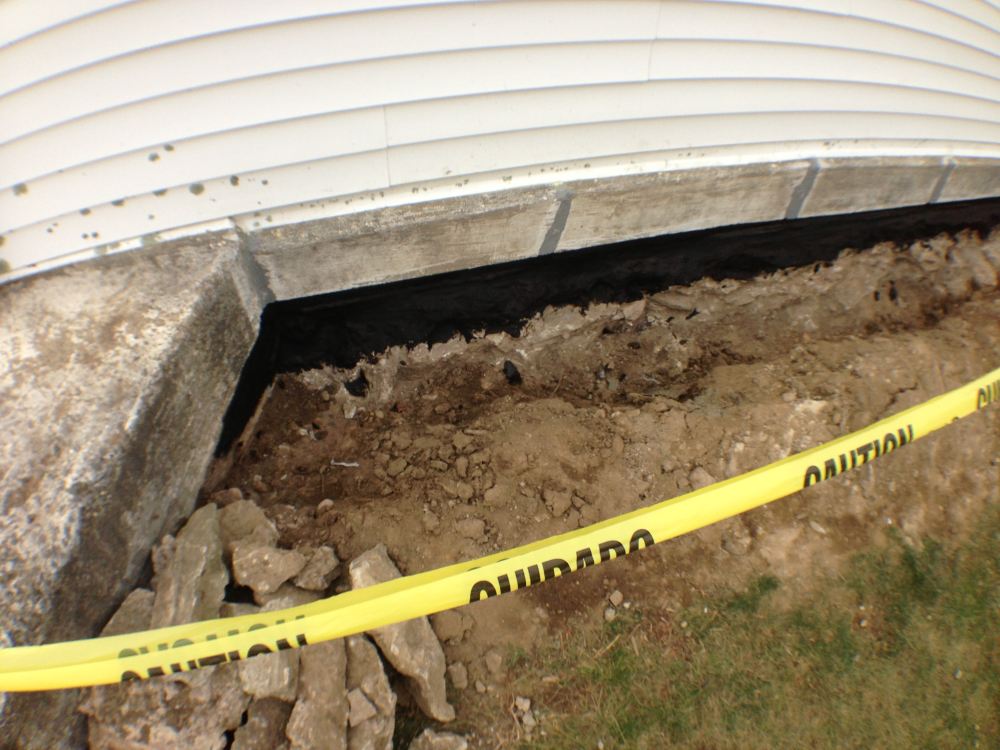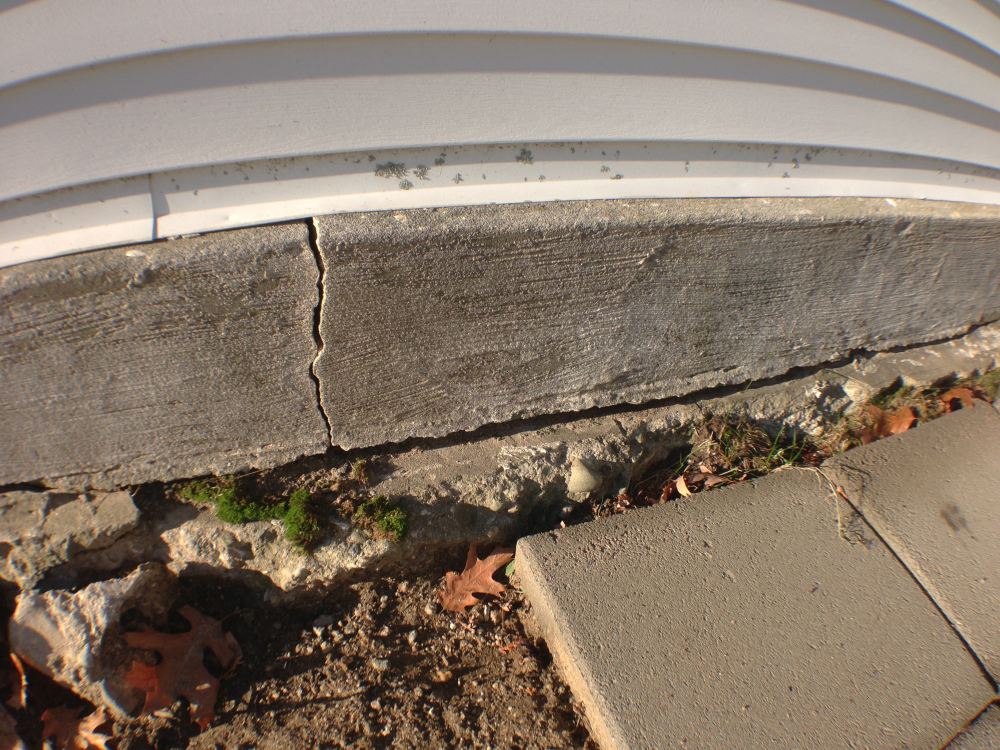Saber Concrete
Repair Services
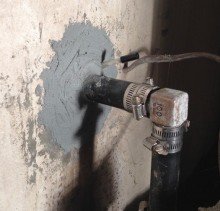
PIPE
PENETRATION SEALING
Different pipes pass through foundation walls that bring water, gas, waste, and electricity in and out of our homes. Some of these pipes pass through special “sleeves” that help seal off water seepage. Unfortunately, many are “sealed” the old fashion way,...
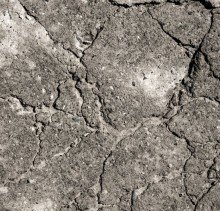
GENERAL
CONCRETE REPAIR
Concrete repair is a general term used to describe the re-surfacing, removal and/or replacement of deteriorated or broken concrete. Cracking, spalling, lifting, flaking and hollow-sounding concrete are all symptoms of deterioration. In New England, there are a few extreme elements that can increase the...
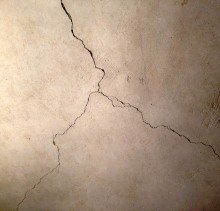
Floor
Crack Repair
Concrete floor cracks in a garage or a basement are very typical in many homes in New England. Usually, they are not an indicator of any major problems but can be concerning if you have any additional symptoms. High Radon Levels: Radon is...
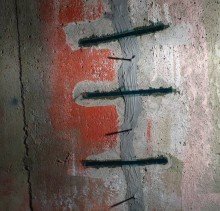
FOUNDATION STABILIZATION
There are many misconceptions and half-truths about foundation concrete cracks and what material should be used to repair them. Much of this confusion is surrounded by crack movement. One common misconception is that all cracks are moving, and the specific repair should allow for that...
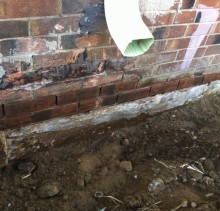
OTHER SERVICES
Saber Concrete Repair can also provide solutions to other common problems. Bulkhead Entries: Common source of water infiltration in many basements. Most bulkheads are made from a separate pre-cast concrete stair piece bolted to the outside of your foundation. This junction between the...
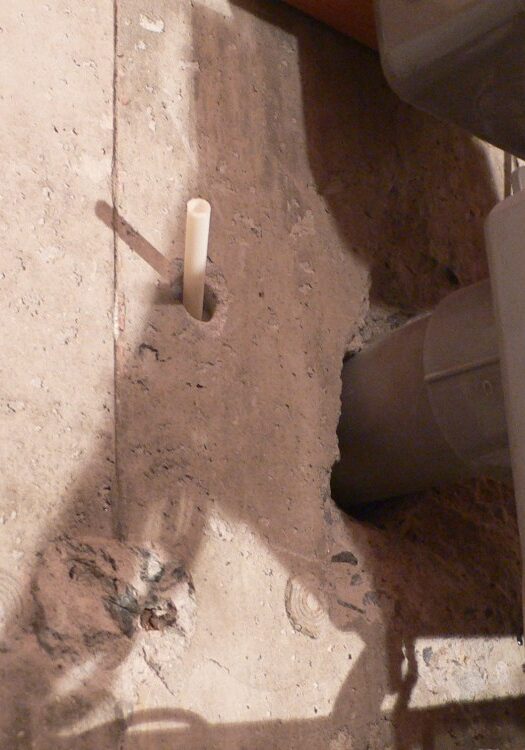
Pipe penetration sealing
There are different pipes passing through foundation walls that bring water, gas, waste, and electricity in and out of our homes. Some of these pipes pass through special “sleeves” that help seal off water seepage. Unfortunately, many are “sealed” the old fashion way, from the inside with hydraulic cement. This is a “negative-side” attempt of waterproofing and frequently fails. The cement is often only applied around the wall surface/pipe with very little applied inside the wall hole.
When the ground gets saturated, water fills the hole in the wall around the pipe and exerts pressure on the cement seal. Since concrete doesn’t bond to concrete very well and it hardly bonds to PVC, plastic, or copper at all, the water easily finds its way into your basement. Since exterior excavation down to the level of most of these pipes is cost-prohibitive, many choose to try and fix it with hydraulic cement, paint, caulking, or even spray-on coatings in a can. We fix it from the inside too, but our process is a little different.
Our method of repair is based on the concept of filling the gap around the pipe with a waterproof material, sealing all avenues and pathways that the water can take to the inside of your basement. This is done using the process of Urethane Grout injection. Urethane Grout is an expansive liquid foam that reacts with water to create highly-dense foam resistant to water penetration. The Grout is injected into the annular space (gap) around the pipe deep inside the wall. The Grout then experiences an expansive reaction creating a driving pressure around the pipe. This pressure forces the foam through any crack, gap, or fissure leading into the pipe penetration. In most cases, the pressure drives the foam grout into the soil around the pipe, creating a diversion barrier for the water. With a 10-year Warranty against water penetration, this process is guaranteed to work better thanthefourth coat of cement!
General Concrete Repair
Concrete repair is a general term used to describe the re-surfacing, removal and/or replacement of deteriorated or broken concrete. Cracking, spalling, lifting, flaking, and hollow-sounding concrete are all symptoms of deterioration. In New England, there are a few extreme elements that can increase the pace of deterioration much quicker than in other parts of the country. They are freezing temperatures and the use of salt in the winter months. Water expands almost 10% by volume when frozen and can exert significant stress on weak concrete. The presence of salt can make things even worse. Although residential structures are not exposed to these elements like commercial infrastructures are, there are still areas of our homes we need to pay attention to. Garage and basement floors, foundation walls, entry stoops and sidewalks, pool patios, bulkheads, and even concrete driveways are all susceptible to concrete deterioration if not installed or protected properly.
Based on industry experience, more attention goes into the protection side of concrete in the commercial market than in the residential. Although the initial quality of most residential concrete meets requirements, the protective steps are frequently left out. This can lead to problems sooner than a homeowner realizes. Producing a strong, long-lasting concrete piece is a three-step process: 1) Supply a good quality concrete mix, cure the concrete properly, and once cured, protect it from the elements.
In general, a concrete repair project's cost is directly related to how long the problem has been neglected. Address any issues you may have sooner than later. If you have any of these symptoms or would like to know more about how to protect your concrete, please contact our office for a free consultation.
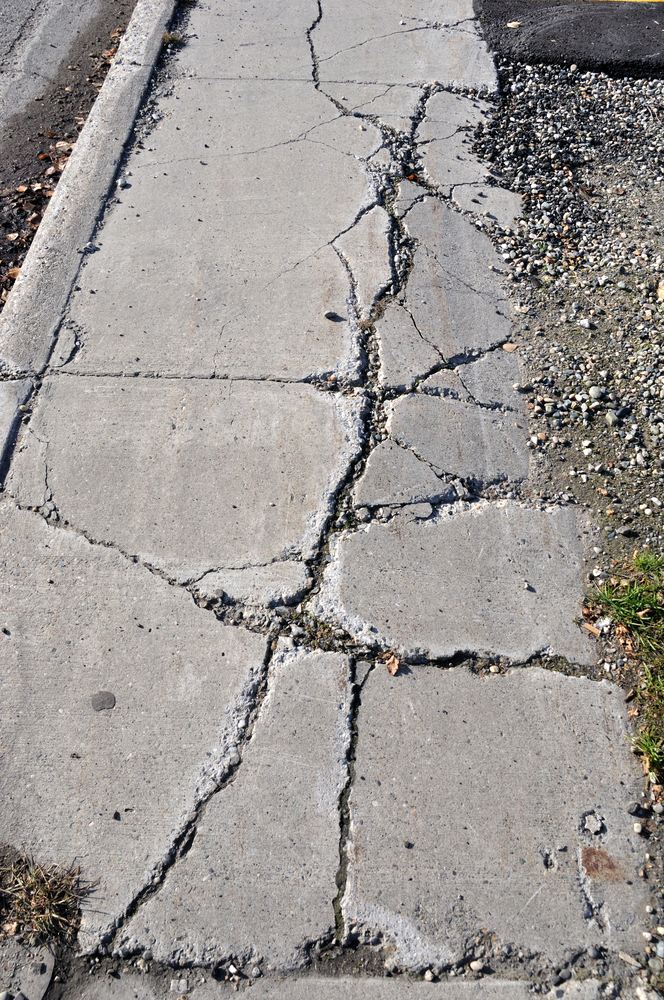
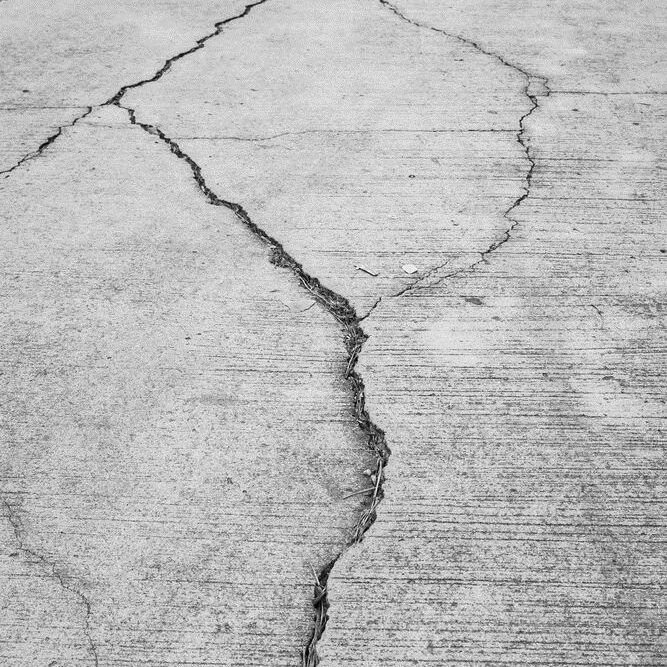
Floor Crack Repair
Concrete floor cracks in a garage or a basement are very typical in many homes in New England. Usually, they are not an indicator of any major problems but can be concerning if you have any additional symptoms.
High Radon Levels: Radon is an odorless gas found under the earth due to decaying elements such as Uranium. It is a carcinogenic gas and the second leading cause of lung cancer in the United States behind smoking. Sealing basement floor cracks can be used in conjunction with mitigation methods to create acceptable levels in residential basements.
Water Seepage Through Cracks: Water entering a basement up through floor cracks indicates hydrostatic pressure under the home and can be a significant problem. Alleviation solutions such as sump pumps and/or French interior drains are very successful and can be used in conjunction with crack sealing to maximize these systems' success.Floor Crack Repair
Concrete Deterioration
Cracks can sometimes be a symptom of distressed and failing concrete, especially in garages. Salt from winter weather falling from our cars will slowly weaken the concrete and cracked areas and eventually lead to edge spalling and crack widening. Sealing these cracks is highly recommended and is probably the single best step a homeowner can take to increase their garage floors' longevity.
Pest/Bug Entry
Any entrance from the outside of a home to the inside of the home can be used by pests such as ants, spiders, and termites to establish residency. A simple sealing can create the deterrent needed to keep pest levels to a minimum.
OUR ROUT AND SEAL SOLUTION
Rout and seal method of floor crack repair is used extensively in the commercial concrete restoration market. Engineers and Architects recommend it due to its success rate and longevity. It involves the grinding of approximately a 1/2 inch by 1/2 inch groove over the crack we do use a special dustless grinder. The groove is then sealed using a unique self-leveling Urethane sealant. This sealant is resistant to many chemical formulations and is designed to accept vehicle traffic.
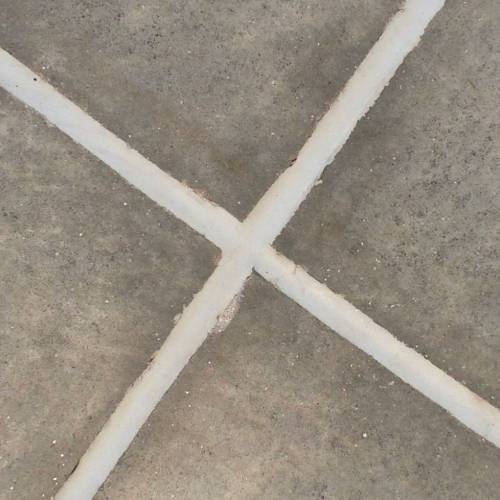
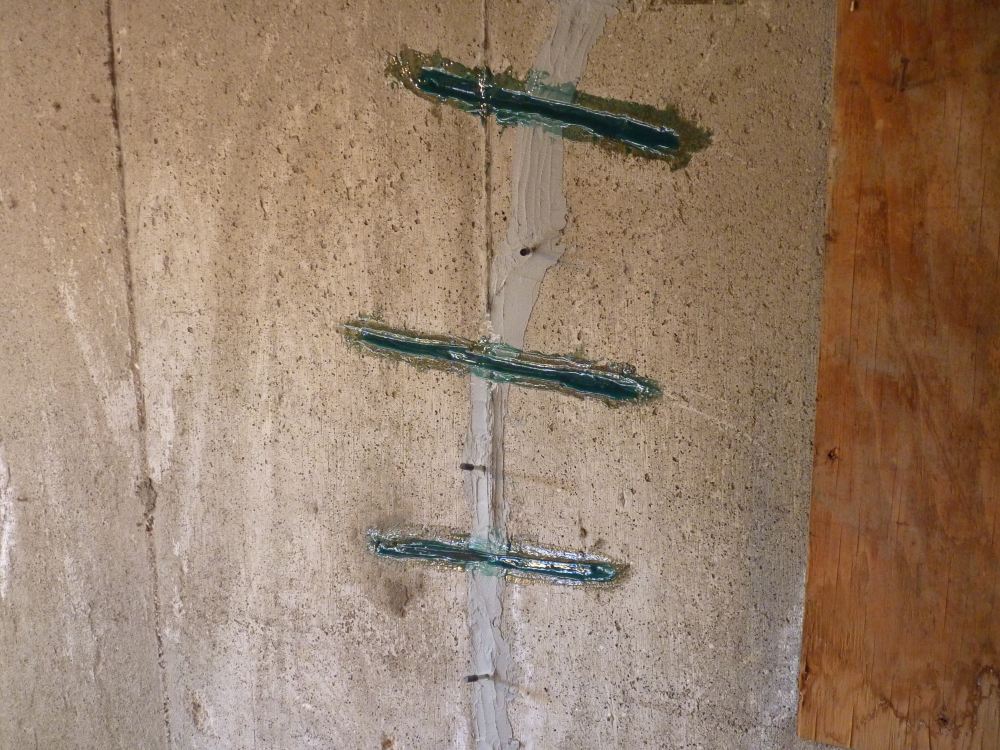
Foundation Stabilization
There are many misconceptions and half-truths about foundation concrete cracks and what material should be used to repair them. Much of this confusion is surrounded by crack movement. One common misconception is that all cracks are moving, and the specific repair should allow for that movement. In other words, fill the crack with something flexible. Although there are times when flexible repairs must be used, these repairs by themselves offer no structural or stabilization benefits. If incorrectly used, it may focus all future foundation movement to that location, creating a “door hinge” effect. This constant hinge type cycle will greatly fatigue the repair material leading to premature failure.
Most residential foundations are designed and built to be a solid or monolithic structure. No joints or seams are intentionally maintained for future movement. With Fortress Stabilization’s carbon fiber countersunk staples, each crack can now be stabilized, returning your foundation to a solid wall again.
CRACK STABILIZATION PROCESS
The crack is first injected. This addresses any water penetration issues. Then, the carbon fiber staples are installed across the face of the crack distributing any future load or movement forces away from the injected crack. This takes all the stress off the injected glue line and transfers it to a section of the wall that is not cracked.
Fortress Staples has a tensile strength ten times stronger than steel, so you can be confident that your foundation is permanently stabilized at that location with maximum protection against re-cracking.
FS#2
Advantages to Fortress Stabilization
Saber Concrete Repair is an authorized Certified Installer of Fortress Stabilization Composite Systems
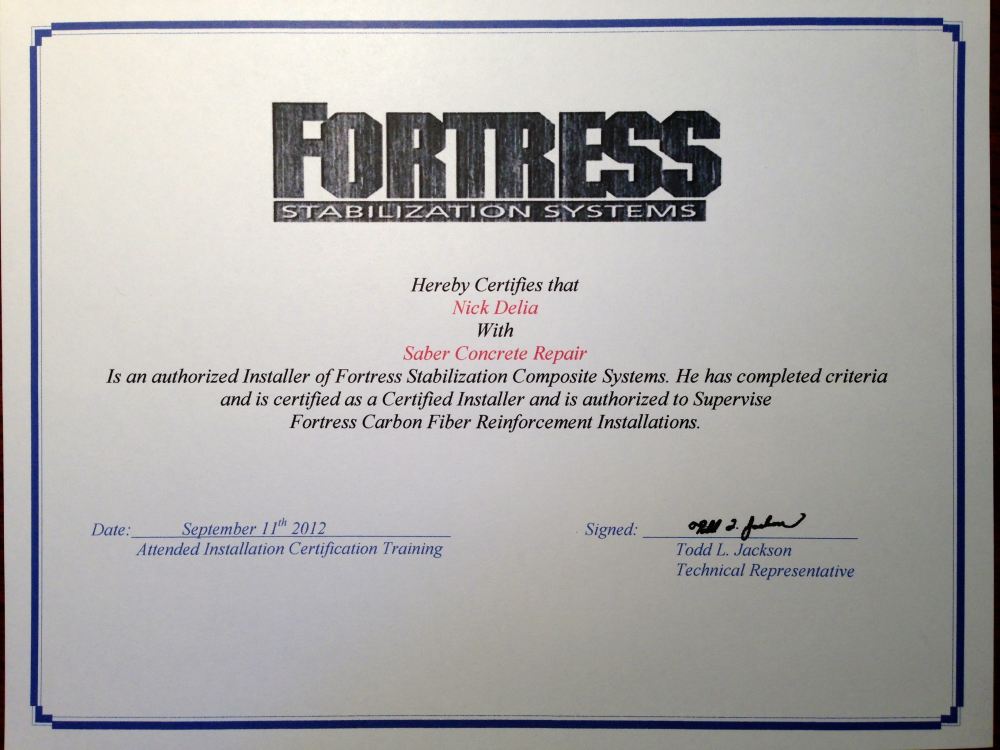
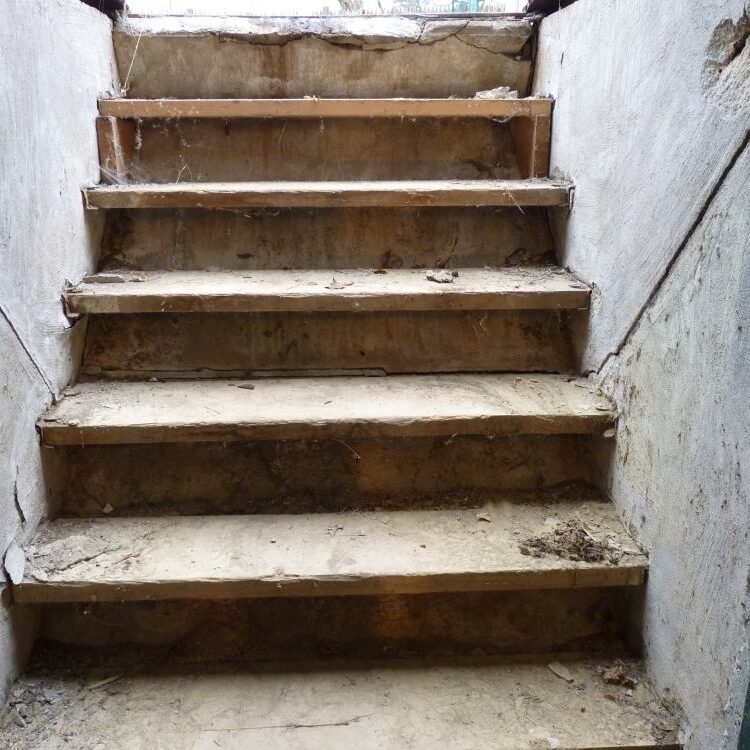
Other services
Saber Concrete Repair can also provide solutions to other common problems.
Bulkhead
Bulkhead Entries: Common source of water infiltration in many basements. Most bulkheads are made from a separate pre-cast concrete stair piece bolted to the outside of your foundation. This junction between the bulkhead and your wall is one problem area. Special gaskets are supposed to be used at these junctions but do very little to stop the water.
A metal door piece is then attached to your house and the top of the concrete bulkhead. The junction where this door sits on the concrete is another problem area. It is a tough joint to seal properly because the sealant material must stick to metal and concrete. Not to mention it is an exterior joint exposed to rain, snow, and sun.
We use only commercial-grade Epoxy and Urethane sealants for bulkhead waterproofing. Between the years of concrete sealing experience and access to the most advanced repair materials on the market, you can be confident you are getting a quality, long-lasting repair.
Tie Rods or Snap Ties
Metal rods that extend through your wall are used to help hold the concrete forms in place while the concrete is poured. This rod does not get removed and is left in place. Since it goes through the wall, some ties can leak if the exterior damp-proofing membrane doesn’t seal them off.We use either an Epoxy sealant or grout foam injection to stop these from leaking. They are not major sources of basement water seepage but can be problematic if weeping behind a finished sheetrock wall.
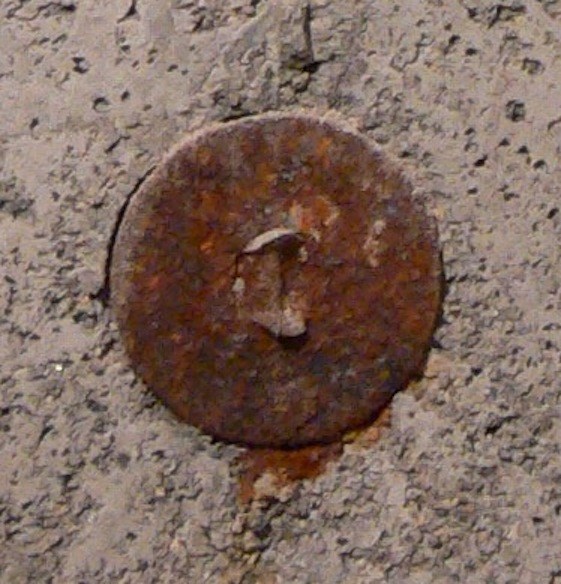
Cold/Construction Joints
Seams where two separate pieces of concrete meet. The most common condition creating one of these joints is when an addition to a home is built, which also has a foundation. The junction where the new concrete for the addition meets the old foundation is a natural weakness for water penetration. These joints are repaired using Urethane Grout injection. Expansive urethane foam is injected between the two walls into the seam and allowed to expand into a tight waterproof gasket.

Honeycomb/
Unconsolidated Concrete
Hardened concrete that did not cure into a completely solid section. These porous areas are very noticeable because you can see holes and spaces going into the concrete wall versus a smooth, flat solid surface. If these areas continue through the wall, they can allow water to pass through them, entering your basement.The fix depends on the severity of the unconsolidated area. If small enough, urethane grout can be injected, similar to a crack. The surface would be patched and sealed, allowing the waterproofing foam's expansive properties to travel throughout the unconsolidated area and into the earth behind thewall. If the area is large, traditional repair methods may remove a porous area, forming and pouring new concrete to a more solid consistency.
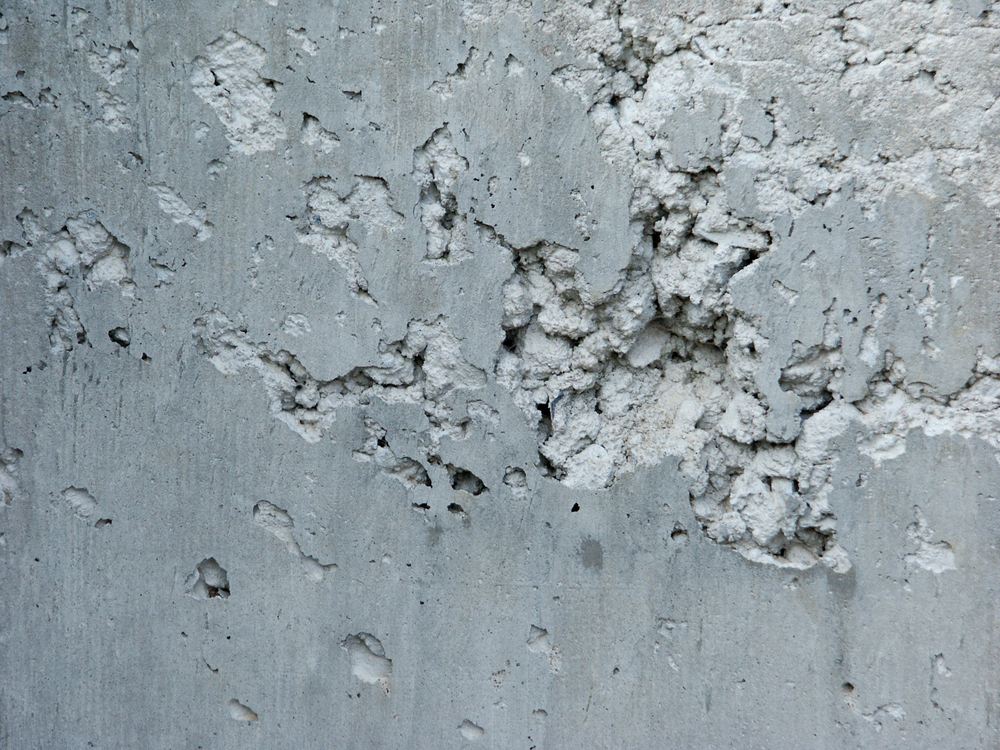
Exterior Waterproofing
Many think that the black membrane applied to the exterior wall before backfilling a foundation is a “waterproof” membrane. It is not. It is called a “damp-proofing” membrane, and its purpose is to create a separation between the concrete wall and the wet, damp earth. Concrete is a porous material and will absorb water if left in contact with it long enough. Without this membrane, your foundation wall would soon absorb large amounts of water from the damp earth and attempt to dry itself by releasing this moisture into your home. These water-resistant membranes do a good job at creating a barrier against this dampness but do not bridge or seal cracks, seams, or utility penetrations very well. Positive side waterproofing repairs performed on the outside of a structure are sometimes a good approach. When access to the basement problem area is restricted due to utilities such as water/oil tanks and furnaces or the problem behind a sensitive area of a finished basement, an exterior solution may be your best choice. Sometimes, the problems lie just beneath the ground surface where minor digging is all that is required. Saber will discuss all your options to help you make a smart, informed decision.
